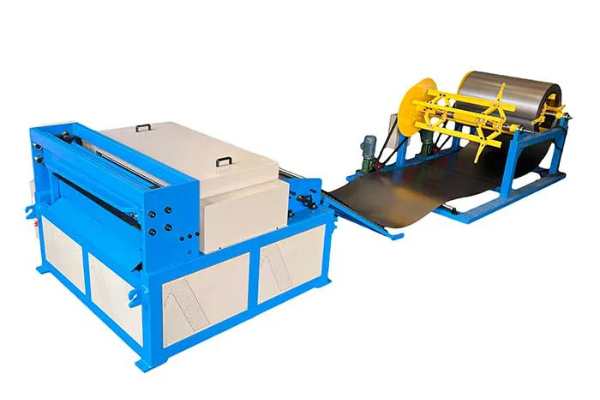
Common Sheet Metal Rolling Machine Problems and How to Fix Them
- By:Metmac
- 2024-05-31
- 139
Sheet metal rolling machines are essential tools in the manufacturing industry, used to shape and form metal sheets into desired shapes. However, like any machinery, they can encounter various problems that can affect their performance and efficiency. Identifying and fixing these problems promptly is crucial to ensure smooth operation and maintain productivity.
Material Handling Issues
Misalignment: Incorrect alignment between the rolls can result in uneven rolling, affecting the sheet’s quality. To fix this, adjust the roll positioning using shims or spacers to ensure proper alignment.
Improper Feeding: Poorly fed material can cause jams or accidents. Check the feed rollers and make sure they are properly engaged and provide enough grip to move the material smoothly through the machine.
Roll Maintenance Problems
Worn Rolls: Over time, rolls can wear out due to friction and pressure. Inspect the rolls regularly for signs of wear and replace them if necessary to maintain proper rolling performance.
Dirt and Debris Buildup: Dirt and debris can accumulate on the rolls, affecting their grip and rolling accuracy. Clean the rolls thoroughly using solvents or brushes to remove any buildup.
Hydraulic or Electrical Faults
Hydraulic Leaks: Hydraulic leaks can compromise the machine’s performance and create safety hazards. Inspect the hydraulic lines and fittings for any leaks and repair or replace them as needed.
Electrical Faults: Electrical faults can affect the machine’s control systems and power supply. Check the wiring, switches, and circuit breakers for any faults and repair or replace them if necessary.
Incorrect Settings
Inappropriate Roll Gap: The roll gap must be set correctly to achieve the desired sheet thickness. Adjust the roll position using the adjustment knobs or handwheels to ensure the proper gap.
Excessive Tension: Applying excessive tension during rolling can cause the material to stretch or break. Adjust the tension rollers or use a tension meter to maintain the appropriate tension level.
Other Mechanical Issues
Loose Belts: Loose belts can slip and reduce the machine’s power transmission. Inspect the belts regularly and tighten them as needed to ensure proper operation.
Damaged Gearbox: A damaged gearbox can affect the machine’s rolling speed and torque. Check the gearbox for any unusual noises or vibrations and replace it if necessary.
By promptly identifying and addressing these common problems, you can maintain your sheet metal rolling machine in optimal condition, ensuring its efficient operation and extending its lifespan.
-
The Advantages of Using a Sheet Roll Forming Machine in Manufacturing
2024/09/14 -
How to Optimize Your Laser Sheet Cutting Machine for Maximum Performance
2024/09/12 -
How to Maximize Efficiency with Modern Sheet Metal Working Machines
2024/09/04 -
The Environmental Benefits of Using Duct Board Grooving Machines
2024/09/03
-
Reliable Duct Fabrication with Advanced Grooving and Sealing Machines
2025/06/06 -
Efficiency and Precision with Electrical Press Brake Solutions
2025/06/06 -
Precision and Efficiency with Advanced Metal Bending Machines
2025/06/06 -
Boost Your Productivity with Advanced Sheet Metal Machinery Solutions
2025/05/31
-
A Guide to the Latest Innovations in Sheet Metal Folding Machines
2024/11/29 -
Key Features to Consider When Investing in a Sheet Metal Folding Machine
2024/11/28 -
Enhancing Precision with Advanced Sheet Metal Folding Machines
2024/11/27 -
How to Choose the Right Sheet Metal Folding Machine for Your Workshop
2024/11/26



